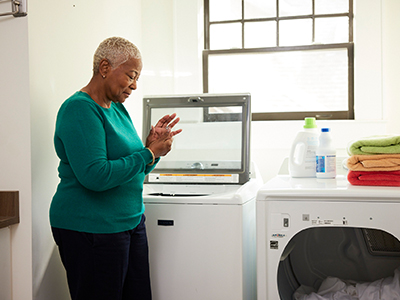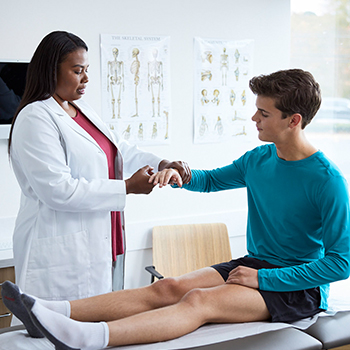September Is Pain Awareness Month
Spread the word — September is Pain Awareness Month. The Arthritis Foundation has the resources you need to better understand and manage your pain this month — and every month.
In 2001, the Arthritis Foundation was one of 80 organizations that banded together to launch the first Pain Awareness Month the following year. Every September, we focus attention on the topic of chronic pain and its personal, social and economic impact on the nearly 60 million adults and children in the U.S. living with arthritis.
Everyone has acute pain from time to time, typically from an injury, like cutting a finger or pulling a muscle. Usually, the pain goes away within 30 days or once the injury heals. Chronic pain, on the other hand, persists or progresses, and your body keeps hurting for weeks, months or even years. It's estimated that 100 million people in the United States experience chronic pain. If you have arthritis, you may be one of them.
 Arthritis Pain
Arthritis Pain
There are more than 100 types of arthritis and related diseases, and not all arthritis pain is alike. It can originate in different areas of the musculoskeletal system, triggering chemical and electrical signals that travel from the affected area and alert your brain that you’re hurt. From there, things get personal. Everyone’s threshold and tolerance for pain is unique.
Coping with ongoing pain can be the hardest part of living with arthritis. It can disrupt every part of your life — and many parts of your life can also affect your pain.
Some Eye-Opening Facts
- Women are more likely to develop chronic pain and often feel pain more intensely than men.
- Almost 90% of people surveyed by the Arthritis Foundation have pain that interferes with their daily lives.
- Arthritis isn’t confined to older adults: 2 out of 3 people living with arthritis are younger than age 65. Hundreds of thousands of kids and teens in the U.S. live with juvenile arthritis or another rheumatic disease.
- Arthritis pain is pervasive and impacts a patient’s physical and mental health. Patient-reported data tells us that 58% of adults with arthritis experience symptoms of depression outside of the general population norm.
- Read more about six factors that affect arthritis pain.

Get Your Arthritis Pain Under Control
- Different types of arthritis can cause different kinds of pain. Likewise, there are also different treatments, both with and without medications. See how arthritis hurts and some treatment options.
- Choose from several pain management episodes of our Live Yes! With Arthritis podcast. From complementary therapies and treatments to lifestyle habits and psychological techniques, discover unique and proven ways to take control of arthritis pain.
- One of the most powerful things you can do to help others living with arthritis is share your story. If you have arthritis, care for someone who does or are making an impact in the arthritis community, your experiences can help someone who may feel alone.
- The way you respond to pain can affect the way you experience it. Learn the psychology behind pain from experts in our Navigating Pain webinar.
- You can effectively manage your arthritis pain without a prescription. Our free e-book, 45 Ways to Tame Pain, can help guide you.
- Connect with others who understand in our Chronic Pain Connect Group, with expert speakers, interactive sessions and engaging activities.
- Our pain management hub offers numerous resources that can help you head off pain, spanning a variety of topics.
- One-on-one support is available in English and Spanish from our Helpline. Call toll-free: 800-283-7800. You can also submit questions through arthritis.org/helpline.
Stay in the Know. Live in the Yes.
Get involved with the arthritis community. Tell us a little about yourself and, based on your interests, you’ll receive emails packed with the latest information and resources to live your best life and connect with others.
